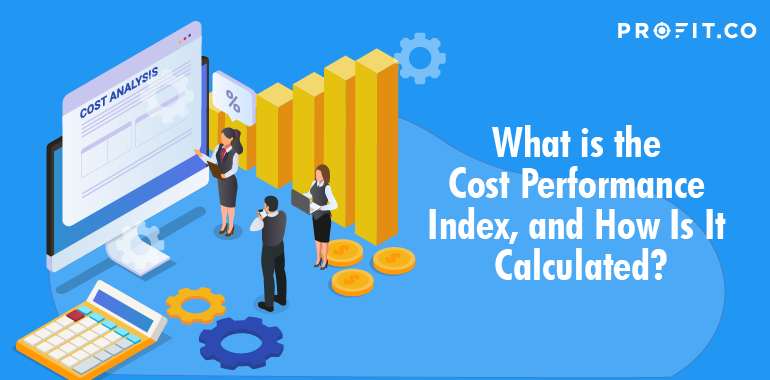As a project manager, performance is everything. Businesses invest their time, capital, and human resources into making projects work successfully. So how do you tell that your project is on time, on budget, and profitable long before it’s over?
One way is by using the cost performance index, or CPI. This seemingly simple indicator can reveal a lot about the health of your projects. Let’s look at the cost performance index and how it supports project management decisions.
Cost Performance Index
The cost performance index is a ratio that determines the cost efficiency of a project. To understand how it works, here’s a breakdown of the cost performance index formula:
EV stands for earned value. It is the currency amount of the project’s total allocated budget.
AC stands for actual cost. The currency amount or how much has already gone into the project.
Ideally, the EV and AC should yield a CPI of 1, meaning that the project is within budget. If it yields a value less than 1, the project burns more resources than expected. If it yields a value greater than 1, the project achieves results at less than the allocated budget.
Why Does CPI Fluctuate?
Projects are never static. Many elements go into each project’s success, and if any factor changes, so does the CPI. The main factors influencing a project’s cost efficiency include equipment, weather changes, employee fatigue, and even natural disasters.
For example, equipment breakdowns can stall a project in terms of time, workforce, and cost of repairs. Keep in mind that CPI fluctuations are a normal part of the project management process. This is why you need a CPI operating range to maintain your performance.
What is CPI Operating Range?
A CPI operating range is the floor and ceiling of your project performance. It incorporates all possible unpredictable events that may affect your project. The scope also depends on the environment surrounding your project.
If you’re operating in a laboratory, a few things could interrupt your project because you’re in a controlled setting. Therefore, your CPI operating range is narrow, between 1.05 and 0.95.
If your project is running in the middle of the desert, on the other hand, there are higher chances of running into high winds, heat waves, sand storms, equipment malfunctions, and so on. In this case, your CPI operating range is wider, between 1.50 and 0.5. It means that your project is still successful if it maintains this range, given the disruptions that could impact your efficiency.
How to Interpret CPI
Ideally, you should establish your CPI operating range before your project begins, during your project planning. Then, if your project falls outside of your scope in either direction, assess your workflows. You may discover:
- Resources going to activities outside the scope of your project, or
- Overlooked milestones that may deceptively indicate overperformance
Note: Over-performing projects are often a warning sign. If you consistently perform drastically better than expected, it could mean costly repairs in the future. It could also lead to a poor reputation if you didn’t match future projects with the same care and achievement.
Cost Performance Index in Project Management
CPI in project management is intricately tied to budget estimation and administration. CPI helps managers to deliver on their projects despite financial restrictions. It also anticipates deviations from the 1.00 CPI target and allows you to troubleshoot and improve your efficiency throughout the project.
Calculating Cost Performance Index
As mentioned at the start, CPI = EV / AC. While the actual cost (AC) is straightforward, the earned value needs further calculation:
Example:
You have a 6-month-long project with an allocated budget of $100,000. After three months, you have spent $50,000 as your actual cost. However, only 40% of the work is complete when you check your project milestones. Your earned value (EV) is:
Let’s calculate your CPI:
CPI = $40,000 / $50,000 = 0.80. This means that your project is over budget.
Conclusion
The cost performance index in project management is a great way to unlock your project’s potential. With the proper project controls and performance indicators, you can steer every project to as close to the 1.00 CPI target as possible.
The cost performance index gives you insights into every step of your project. In the end, CPI helps you make clear problem-solving decisions to deliver successful projects every single time.
KPIs are only useful when they’re carefully tracked and monitored. Profit.co’s OKR Management software gives you the ability to track your most important KPIs on customizable boards, as well as transparently monitor company-wide OKRs so every member of the team can monitor business performance and progress.
To learn more about Profit.co, book a demo with our OKR experts, or get started for free today!
